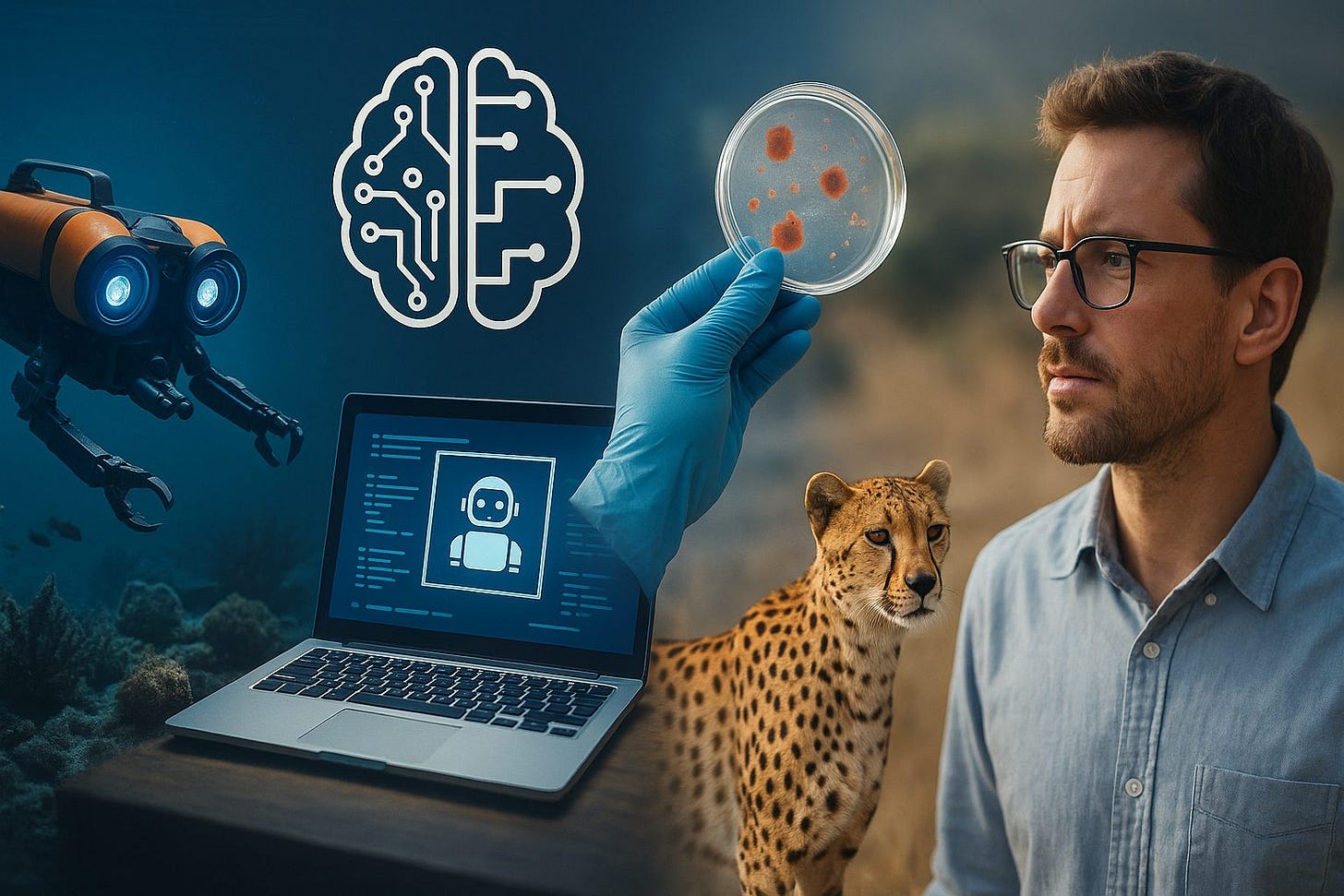5 AI Niches Nobody Is Talking About (Yet)
Unlocking the Hidden Gems of AI — Five Niches Ready to Explode While Everyone’s Chasing ChatGPT
If you’re tired of reading yet another “Top 10 AI Trends” list rehashing the same tired stuff — generative text, image-creation, chatbots — good. Because I’m about to take you off the beaten path. I’m talking about five under-the-radar AI niches that most people are simply ignoring (yet). Niches where the competition isn’t fierce — and where the opportunity sits, quietly ticking away. Think of them as the quiet coves while everyone else rushes to the beach.
I think that by identifying these “sleeping” niches now, you can stake a claim before the stampede begins. Let’s dive in. 🏊
1. AI for Marine & Underwater Systems
Most people imagine AI in phones or self-driving cars. Fewer imagine AI exploring the ocean floor. Yet the research is already humming. For example, a recent paper on “AI-Driven Marine Robotics” shows underwater perception and ecosystem monitoring are fast becoming serious research fields.
Why it matters: The oceans cover ~70% of Earth’s surface, but are vastly under-monitored. AI that can sense, analyse, and act beneath the waves opens up new frontiers: marine biology, climate-change mitigation, resource management, even naval tech.
What’s interesting:
Algorithms built for murky/2D/low-light underwater scenarios push the boundaries of computer vision.
New business models: environmental monitoring as a service; underwater drones + AI analytics; biodiversity tracking.
Still early enough that being “first mover” isn’t cliché.
If you’re comfortable with robotics + vision + environment = big win. Consider this: what if the next big AI startup isn’t in Silicon Valley but 2 miles below the surface?
2. Machine Olfaction (AI that Smells)
Yes, you read that right: AI that can smell. We tend to focus on sight and sound for machines. But a recent review (from October 2025) shows “machine olfaction + embedded AI” is shaping a new global sensing industry.
Why it matters: Smell sensing opens new possibilities: detecting diseases via breath, monitoring industrial gases, agricultural applications (soil/crop health), security (chemical detection). These are real-world problems where a “smelling AI” adds value.
What’s interesting:
The tech leverages bio-electronic sensors and AI to detect molecules near single-molecule resolution.
Sensors + AI + IoT = a new layer of “chemical awareness” in smart devices.
Because it’s niche, the hype is low — meaning less crowded field.
So if you’ve been waiting for something novel in AI that feels sci-fi but is real-world — machine olfaction could be your ticket.
3. Agentic AI for Vertical Workflows
We all know about chatbots and generative models. But agentic AI — AI that acts rather than just responds — is stepping into new verticals. The Wikipedia entry for “Agentic AI” (2025) notes that many organizations are already allocating large portions of their AI budgets to agentic capabilities.
Why it matters: Instead of asking AI to generate a text or image, you ask it to perform a task — scheduling, coordinating, executing actions across systems. That kind of shift opens new niches: legal workflows, complex project management, autonomous operations in manufacturing or logistics.
What’s interesting:
The value isn’t “cool-feature” but “automate this workflow in our business where people are wasting hours”.
Because many businesses still treat AI as a nice-to-have, there’s a gap for solution providers with domain expertise.
It demands a blend: industry knowledge + agents + integration.
If you’re in enterprise/operations and hate inefficiency — agentic AI in a vertical (say law-firm workflows, or real estate deals) could be a hidden gem.
4. Conservation & Ecology AI
When people mention AI niches, they rarely think of endangered species, illegal logging detection or ecological monitoring. Yet one article on “AI Startup… Untapped Niches” explicitly calls out conservation technology as an emerging space.
Why it matters: The climate-tech and environmental challenge isn’t going away. Governments, NGOs, corporations increasingly fund tech that helps monitor or preserve nature. AI that can spot poaching, detect forest change, monitor biodiversity — that’s high-value work with real purpose.
What’s interesting:
Flows from drone/vision/satellite modalities but applied to nature.
Less competition than generic commercial AI, so lower cost of differentiation.
Also strong narrative: “tech-for-good” credentials matter for funding and partnerships.
So if you want an AI niche with impact and upside — ecology/conservation could be a sweet spot.
5. AI for Rare Diseases & Niche Medical Diagnostics
We all hear “AI in healthcare” (big theme). But drilling down: AI for rare diseases and niche diagnostics is still largely under-served. The ] mentions rare-disease detection as a promising area.
Why it matters: Rare diseases affect millions globally, but each individual disease is rare — meaning big data is sparse, specialization is high. AI that can augment diagnostic processes, detect subtle biomarkers, or personalise treatment regimens has strong leverage.
What’s interesting:
Requires domain-expertise (medical/genetic), so barriers to entry reduce competition.
Potential for huge value: earlier diagnosis = better outcomes.
Regulatory/ethical complexity is real — but for those willing, it brings strong credibility.
If you’re familiar with healthcare or diagnostics and want to ride AI’s wave in a meaningful, less-crowded space — this one’s for you.
Also read: 7 AI Side Hustles You Can Start This Weekend (No Coding Required)
Why Now Is the Time
According to several recent reports:
The overall AI market is still in steep growth mode.
Many niches that sound far-fetched now already have research, early adoption, or business models forming.
The “obvious niches” (chatbots, marketing automation) are crowded; the lower profile ones above offer more blue ocean.
Simple summary: if you want to avoid the herd and stake claim in something meaningful — these niches are worth your attention.


